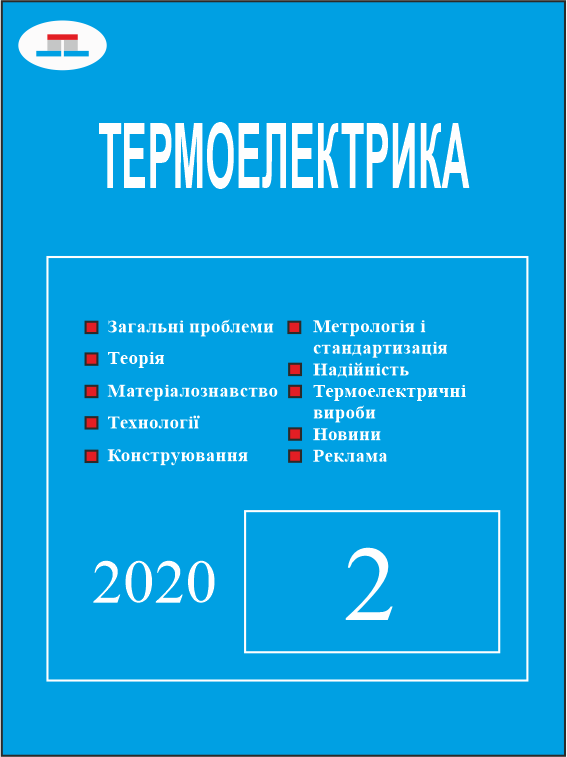Розрахунок швидкодії термоелектричного охолоджувача напоїв з «мокрим» контактом
Ключові слова:
охолоджувач напоїв, швидкість охолодження, умови теплообміну, теплові опориАнотація
У статті запропоновано інженерну методику розрахунку швидкості охолодження напою в термоелектричному охолоджувачі з мокрим і сухим контактом. Розрахунковим шляхом був підтверджений раніше доведений експериментально висновок про те, що заповнення щілини між пляшкою з напоєм і ємністю охолоджувача дозволяє істотно підвищити швидкодію охолоджувача. Представлено результати порівняльних розрахунків на прикладі автомобільного охолоджувача напоїв Car mini-cooler FM 201.001. Запропоновано шляхи удосконалення конструкції охолоджувача з метою підвищення його швидкодії. Бібл. 14, Рис. 6, Табл. 5.
The paper proposes an engineering technique for calculating beverage cooling speed in a thermoelectric cooler with wet and dry contact. By calculation, the previously proven experimentally conclusion was confirmed that filling the gap between the bottle with the drink and the cooler container can significantly increase the speed of the cooler. The results of comparative calculations are presented by the example of an automobile cooler of drinks Car mini-cooler FM 201.001. The ways of improving the design of the cooler in order to increase its speed are proposed. Bibl. 10, Fig. 5, Tab. 3.
Посилання
Deasy, M.J., et al. (2018). Electricity generation from a biomass cookstove with MPPT power management and passive liquid cooling. Energy for Sustainable Development, 43, 162–172, doi:10.1016/j.esd.2018.01.004.
Gopi, Nikhil Pattath, and Subhakar Devendran (2015). Autonomy considerations for a standalone photovoltaic system. Sustainable Energy Technologies and Assessments, 10, 79–83., doi:10.1016/j.seta.2015.03.005.
Eldesoukey, Ayman, and Hamdy Hassan (2019). 3D model of thermoelectric generator (TEG) case study: effect of flow regime on the TEG performance. Energy Conversion and Management, 180, 231–239, doi:10.1016/j.enconman.2018.10.104.
Yang, Haoqi, et al. (2018). Optimization of thermoelectric generator (TEG) integrated with three-way catalytic converter (TWC) for harvesting engine’s exhaust waste heat. Applied Thermal Engineering, 144, 628–638, doi:10.1016/j.applthermaleng.2018.07.091.
Kütt, Lauri, et al. (2018). Thermoelectric applications for energy harvesting in domestic applications and micro-production units. Part I: Thermoelectric concepts, domestic boilers and biomass stoves. Renewable and Sustainable Energy Reviews, 98, 519–544, doi:10.1016/j.rser.2017.03.051.
Sornek, Krzysztof, et al. (2019). Comparative analysis of selected thermoelectric generators operating with wood-fired stove. Energy, 166, 1303–1313., doi:10.1016/j.energy.2018.10.140.
Nuwayhid, Rida Y., et al. (2005). Development and testing of a domestic woodstove thermoelectric generator with natural convection cooling. Energy Conversion and Management, 46(9-10), 1631–1643, doi:10.1016/j.enconman.2004.07.006.
Zhao, Yulong, et al. (2018). Performance analysis of automobile exhaust thermoelectric generator system with media fluid, Energy Conversion and Management, 171, 427–437, doi: 10.1016/j.enconman.2018.06.006
Champier, Daniel. (2017).Thermoelectric generators: a review of applications. Energy Conversion and Management, 140, 167–181, doi:10.1016/j.enconman.2017.02.070.
Price-Allison, A., et al. (2019). Emissions performance of high moisture wood fuels burned in a residential stove. Fuel, 239, 1038–1045, doi:10.1016/j.fuel.201810.1016/j.fuel.2018.11.090.




